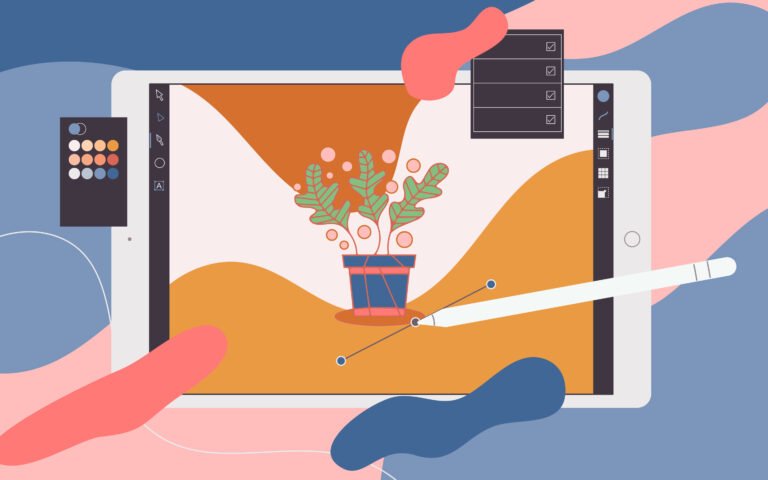In the ever-evolving world of art, digital platforms have emerged as a groundbreaking canvas, offering contemporary artists unparalleled avenues for creativity and expression. As technology continues to reshape our lives, it’s also redefining the boundaries of art, introducing forms like digital painting, 3D modeling, and virtual reality installations that challenge traditional notions of what art can be. In this exploration, we dive deep into how these digital art forms are not just changing the landscape of contemporary art but also how we perceive and interact with it.
Table of Contents
Digital Painting: The New Brush and Canvas
Digital painting, at its core, blends the classical techniques of painting with the modern capabilities of digital tools. Artists use software and devices like tablets and styluses to create visuals that can mimic the textures and effects of physical paints or venture into entirely new realms of digital aesthetics. Unlike traditional painting, digital painting offers an infinite palette of colors and an array of tools that can be switched with a click, opening up possibilities that are limited only by the artist’s imagination.
But it’s not just about the ease of access or the range of tools. Digital painting has opened the art world to a broader audience. Artists who might not have access to expensive materials or who live in remote areas can now create and share their work globally, democratizing art creation and consumption. This democratization aligns perfectly with the ethos of platforms like Article Blade, which aims to bring diverse and innovative content to a wide audience.
3D Modeling: Sculpting in the Digital Age
3D modeling, another facet of digital art, allows artists to create lifelike or fantastical objects and environments in a virtual space. This form of art transcends the limitations of physical materials, gravity, and scale. From intricate sculptures to expansive landscapes, 3D modeling has become a critical tool not just for artists but also for animators, game designers, and filmmakers.
The impact of 3D modeling extends beyond the art itself. It has become a medium for storytelling, enabling creators to build immersive worlds that can be explored and experienced in ways traditional art forms cannot offer. Museums and galleries are also harnessing this technology to create virtual exhibitions, making art more accessible to the public.
Virtual Reality Installations: An Immersive Experience
Perhaps the most immersive of these new art forms is the use of virtual reality (VR) installations. VR art is not just viewed; it’s experienced. By donning a VR headset, viewers can step into entirely new worlds, interact with the art in a 3D space, and even alter it. This interaction creates a unique, personal experience with the artwork, breaking down the barriers between the artist, the art, and the audience.
VR installations are not just about visual experiences; they incorporate sound, movement, and sometimes even tactile elements to create a multi-sensory experience. They challenge the viewer’s perception of reality and art, offering a deeply personal and often emotional journey.
The Future of Art in Digital Spaces
The advent of these digital art forms is more than just a new chapter in the history of art; it’s a redefinition of what art can be. As technology continues to advance, we can only imagine the new forms that will emerge. Artists are already experimenting with AI-driven art, augmented reality (AR), and interactive installations that respond to the viewer’s presence and actions.
However, with these advancements come questions about the nature of art and the role of the artist. As digital tools become more sophisticated, blurring the lines between the creator and the tool, what does it mean for artistic expression and creativity? These are questions that we will continue to grapple with as we navigate this exciting and uncharted territory of digital art.
Embracing the Digital Revolution in Art
As we witness this digital revolution in the art world, it’s clear that these new forms of digital art are not just passing trends but integral elements of contemporary art. They offer new ways to express, experience, and understand art, pushing the boundaries of creativity and opening doors to endless possibilities.
For art enthusiasts, creators, and critics alike, exploring these emerging art forms in digital spaces is not just about keeping up with the latest trends; it’s about being part of a transformative movement that is reshaping the very essence of art. As these digital canvases continue to evolve, they promise to bring forth a new era of artistic expression that transcends traditional boundaries and invites us to reimagine the future of art.

